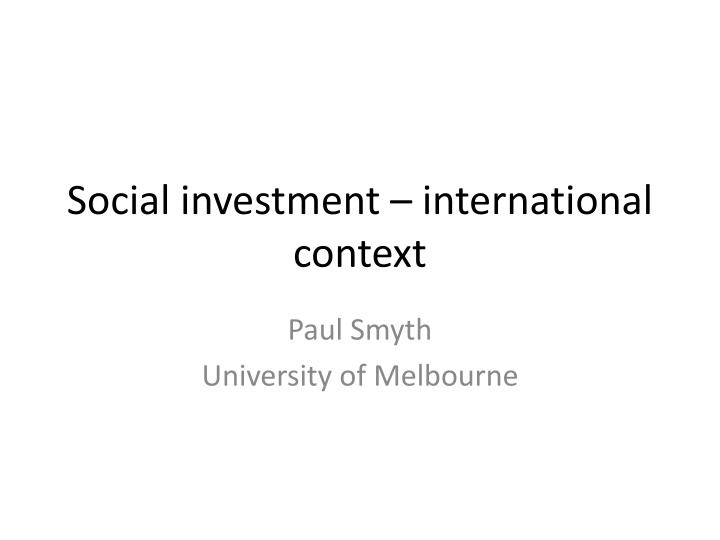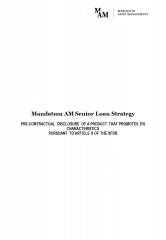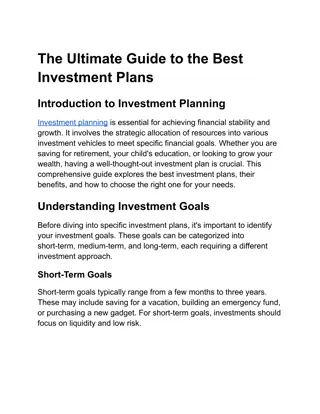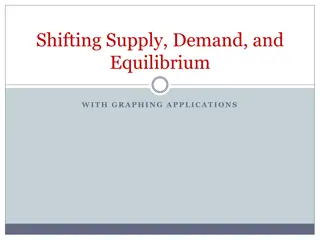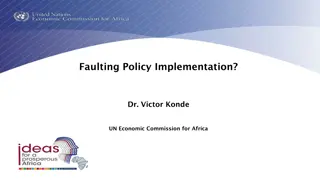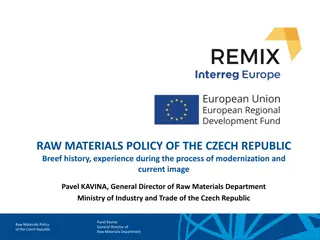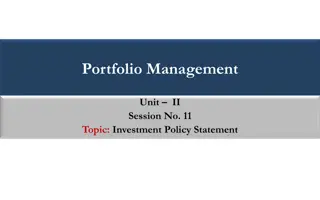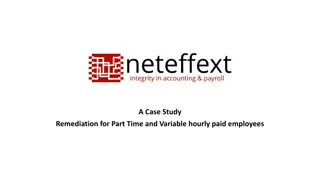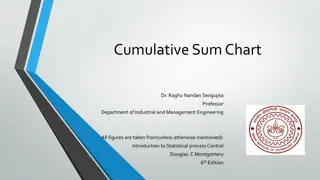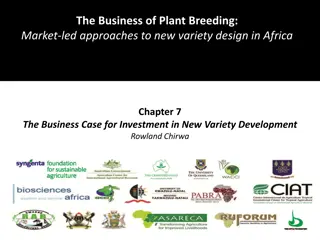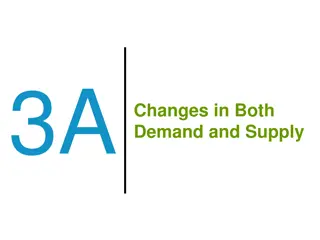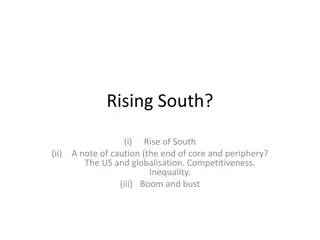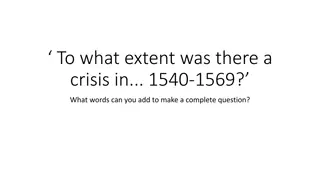Social Investment Perspectives: History and Shifts in Social Policy
This comprehensive overview delves into the historical evolution and paradigm shifts within social investment, exploring key concepts from pre-welfare state ideologies to contemporary strategies in Australia and Europe. It examines the transition from traditional welfare models to a focus on proactive social investment for sustainable development and inclusive growth, highlighting the challenges and opportunities in creating effective social policies for the future.
Download Presentation

Please find below an Image/Link to download the presentation.
The content on the website is provided AS IS for your information and personal use only. It may not be sold, licensed, or shared on other websites without obtaining consent from the author.If you encounter any issues during the download, it is possible that the publisher has removed the file from their server.
You are allowed to download the files provided on this website for personal or commercial use, subject to the condition that they are used lawfully. All files are the property of their respective owners.
The content on the website is provided AS IS for your information and personal use only. It may not be sold, licensed, or shared on other websites without obtaining consent from the author.
E N D
Presentation Transcript
Social investment international context Paul Smyth University of Melbourne
Pre history Pre welfare state: tawney Myrdal Keynes etc Welfare state : T H Marshall New Left: O Connor Gough Offe New Right : friedman hayek Rediscovery: OECD from social protection (1980s) to social investment (1990s) Deeming and Smyth (2016)The 'Social Investment Perspective' in Social Policy: A Longue Dur e Perspective , Social Policy and Admin, (October)
UK Third way: : Paradigm shift (Droboloski\Lister 2008) UK Commission on Social Justice 1994: deregulators\ levellers\ investors/ Giddens (1998) Social investment state Welfare to work investment in early years
In EU Esping Andersen (1999) Social Foundations of Postindustrial Economies; (2002) Why we need a new welfare state From EU Lisbon strategy (2000): Human capital\knowledge economy Life course Employment\ flexicurity To EU Social Investment Package (2013-) http://ec.europa.eu/social/main.jsp?catId=1044&langId=en [US ( Midgley) Canada ( Jane Jenson). General: N Morel et al (2012) Towards a social investment welfare state)]
Social investment Today From education and skills to multidimensional approach : early learning needs housing, needs nutrition, needs money etc Life course approach transitions (early years, schooling, transitions to work, transitions to Care, life long learning) Stocks Flows Buffers Governance challenge ( joined up ) Returns on investment : the measurement challenge See Anton Hemerijck, A. (2015) The Quiet Paradigm Revolution of Social Investment , in: Social Politics. And 2017 The Uses of Social Investment (OUP)
Australia 2005- National Reform Agenda 2006 - Vic Govt (2005) Sen, human capital etc Rudd-Gillard 2007-13 Early years Schooling Youth employment health Closing the gap (indigenous) Perkins, Smyth and Nelms (2004) beyond neoliberalism the social investment state? ;
Reasserts productivist social policy tradition Uncertain economics - GFC\ Keynesian? Neoliberal? Society rediscovered? Subordinated? How promote productive without downgrading protection - a dual imperative See Deeming and Smyth (2015) Social Investment after Neoliberalism: Policy Paradigms and Political Platforms . Jnl Social Policy, 44:)
Si lib McClure report and the discovery of social policy as investment Mapping si onto the liberal welfare regime about individual failure not the market society Nation building out - market fundamentalism in social policy as liability to be reduced SI with welfare as poison (Porter\Tudge)
International: from SI to inclusive growth Asian Development Bank 2007 World Bank 2008 UNRISD - IMF- OECD see IG project UN Agenda 2030 Sustainable Development Goals ALP (2016) Growing Together Tackling Inequality in Australia Deeming and Smyth 2017 Reframing Global Social Policy, Policy Press
Reframing From washington consensus to inclusive growth Sen et al: Rethinking progress Social policy as investment not consumption not just supply side social investment but demand side economic management
World Bank( Growth Report 2008; Inclusive Growth 2009) Policies for inclusion and growth cant be separated. No trickle down Manage pace and pattern of growth ensuring equality of opportunity Broad based growth across sectors Productive employment not just income redistribution On intervention: patience, pragmatism, seek national fit
World Economic Forum (2015; 2017) The IG and Development Report Pragmatic\institutional economics (education, land reform, business support, good governance Inclusive economy equitable BEFORE taxes and transfers are taken into account A focus on process as well as outcomes
Integrated social and economic Framework: 7 Pillars Ed and skills - access, quality, equity Employment and labour productive employment, wage and non-wage compensation Asset building & entrepreneurship small business; home and financial asset ownership
Finance of real ec invetsment Corruption and rents Basic services and infrastructure digital, health etc Taxes and transfers- tax code. Social protection For each sub pillar there are stat indicators making a Dashboard of National KPIs
